Southeast is Southeast, and Southwest is Southwest – Rosés From The Two Southern Opposite Ends of France: The Mediterranean Coast and The Atlantic Coast (A Baker’s Dozen $297)
“A rose is a rose is a rose” is a poetic riff about universal truth by Gertrude Stein, but add an accent aigu to the final ‘e’ and all bets are off. As a style of wine, rosé is as diverse as the terroir which produces it, and even the name ‘rosé’—French, of course, for pink—belies reality as colors range from ruddy, blood-orange-tinted redcurrant in Tavel to the pale melon and peach whispers of Provence.
This week’s Baker’s Dozen are rosés that span hue and heft of pink(ish) wines from the south of France—some delicate enough to grace a summer patio without accompaniment, others rich enough to stand up to complex cuisine.
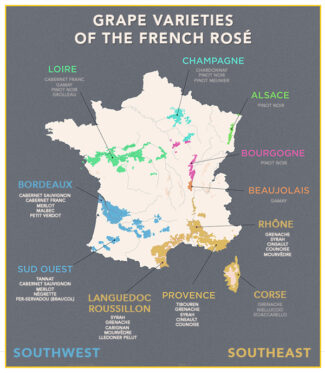
Vintage 2021 – (Climate) Change is Afoot
Over the past 30 years, the average temperature in southern France has risen by 1.5 degrees Celsius and predictions suggest that by the end of this century, up to two months each year will suffer drought. And it’s not just heat that is spawned by climate change; hailstorms in the spring are become ever more frequent and wetter, milder winters allow pests to survive that might otherwise have been killed.
2021 proved to be the poster child for the difficulties that climate change are throwing at winemakers throughout France, particularly when it comes to their beloved rosés. In 2021, a wet winter was followed by an unseasonably hot March, which launched early growth. There followed an unexpectedly intense and extensive frost in early April, significantly reduced volumes of Grenache and some Syrah, especially in the western half of the region. The summer was dry, although late-August rain was welcome, though heavy, localized hail in late August and early September decimated some vineyards in the central region. Massive forest fires north of Saint Tropez and along the northern edge of the Massif des Maures further reduced volumes, with some parcels burnt and others suffering from smoke taint.
Some producers have adapted technique to maintain house styles while others are experimenting with new sites and varieties. Flexibility was key for each of the producers represented in this package, and the quality reflected in the wines they released in 2021 shows that the human touch is, under current conditions, sufficient to offset many of nature’s temper tantrums.
The offered 13-bottle package is comprised of one of each of the following wines at $297.
Southeast Regions
The Mediterranean, A Place in The Sun
The Mediterranean Sea takes a sizeable chunk out of France’s hindquarters, and the bite-shaped crescent contains a few of the most dynamic winegrowing regions in the country. Clockwise, from just north of Spain, Languedoc-Roussillon is a swarthy appellation known for Grenache and Carignan blends—two varieties that love the hot coastal sunshine. The insanely productive Languedoc-Roussillon AOPs account for more than a third of the country’s wine output. On the map, Provence comes next, located at the southern end of the Rhône Valley. Provençal wine has been made for over 2,600 years and it’s the only region in France that dedicates almost all of its production to rosé.
Languedoc-Roussillon
Sun-baked and sensual, threaded with rivers and capped by the mountains of Corbières, Languedoc-Roussillon relies on over a hundred grape varieties to produce more than a third of all French wine. Historically, this wine was copious, inexpensive and rather forgettable—everyday wine for the tables of ordinary people. Since the mid-twentieth century, however, with the advent of irrigation in the foothills and coastal plains of Southern France coupled with improved techniques, the region now boasts fewer vines that produce wines of increasing quality. A jigsaw of soils and a broad swath of microclimates creates ideal terroir for the warm-weather, full-bodied varietals often associated with the Rhône, while sharp diurnal shifts allow for the preservation of aroma and natural acidity, resulting in wines of extraordinary balance. A further plus is that Languedoc-Roussillon’s hot, dry climate discourages the growth of mildew and fungi, making synthetic pesticides and herbicides less necessary. As such, it has become a proving ground for organic and biodynamic producers.
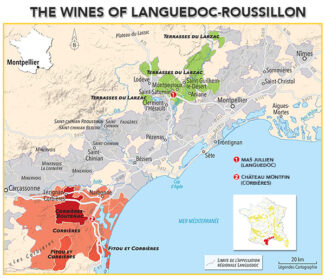
Mas Jullien (Languedoc)
Olivier Jullien grew up in troubled vineyards worked by his father and grandfather. In the 1970s, Languedoc was beset by economic woes driven by decades of over-cropping to produce cheap wine. In a world that was increasingly turning to quality, Languedoc was reduced to an afterthought and many of the children produced by this generation opted for careers far from the wine cellars. Olivier hung on with a firm belief that Languedoc was capable of greater things. After earning a degree in viticulture and oenology, he began farming some of his family’s vineyards and scouring the area for the best vineyards to purchase. He was only twenty years old when he converted the outbuildings on the family estate into a cellar and began vinifying and bottling his own wine under the Mas Jullien label.
Today, Mas Jullien contain 37 acres scattered around the village of Jonquières, north of Montpellier, 25 miles inland from the Mediterranean Sea. The vines grow on the rocky terraces of the plateau of Larzac at the foot of Mont Baudille, reaching altitudes of 3000 feet, the upper limit of vine cultivation.
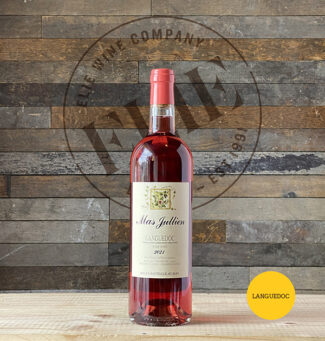 1 Mas Jullien, 2021 Languedoc Rosé ($31)
1 Mas Jullien, 2021 Languedoc Rosé ($31)
A saignée rosé made from juice that is bled off the skins of red grapes from Jullien’s vineyards on the Terrasses-du-Larzac. A blend of Cinsault, Carignan and Mourvèdre, though the blend can change from vintage to vintage. Fermentation takes place in stainless steel with native yeast, aging in Stockinger foudres of mixed ages. It is a structured and somewhat wild wine of deep, earthy complexity showing garrigue and wet stone behind strawberry and watermelon.
Château Montfin (Corbières)
Corbières is one of the most productive wine-producing regions in Languedoc-Roussillon. With more than 2000 growers, 300 private wine producers, and over 30 cooperatives, the annual output of wine is over 73 million bottles; roughly on par with the entire state of Oregon. Most of the output is red, rustic and filled with southern spice, made from Grenache, Syrah, Mourvèdre, Lladoner Pelut and Carignan. But Rosé Corbières has gained an international reputation for quality. Corbières is a pastiche of soils and subsoils—volcanic upheavals have exposed layers from many geological periods, and 11 unique terroirs have been identified.
Old vine is the name of the Montfin game, and when Jérôme Estève took over the domain in 2002, he found parcels of Carignan that had been planted in the 1930s. By Corbières standards, his production is small with yields highly restricted, and, since 2009, the 50-acre estate has farmed Grenache, Syrah, Mourvèdre and sixty-year-old Cinsault vines organically. They also practice biodynamics, spraying an infusion of nettle and comfrey on the vines and using green manure on to add organic material and humidity to the subsoil, and planting various type of trees around the vines to recreate equilibrium in the ecosystem.
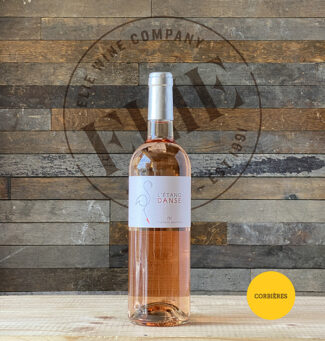 2 Château Montfin ‘L’Étang Danse’, 2021 Corbières Rosé ($17)
2 Château Montfin ‘L’Étang Danse’, 2021 Corbières Rosé ($17)
Named after the ballet of flamingos on the lake of Peyriac, the wine is 50% Grenache Noir, 45% Cinsault and 5% Syrah. It is juicy and bright, with cranberry and pungent wild flowers on the nose, with supple raspberry and bitter orange throughout the palate, ending on with sharp salinity.
Provence
It’s hard to top Provence for sheer pastoral beauty, from its lavender fields to the hilltop villages and a landscape flecked with vineyards and orchards, everything behind a backdrop of the Mediterranean Sea. The vineyards of Provence snake along an area 125 miles long from east to west, and no Provençale vineyard is more than 25 miles from the Mediterranean. Vines here enjoy 3000 sunshine hours per year, along with an annual average temperature of 58°F while long, dry Mediterranean summers provide ideal harvest conditions in most years, leaving the majority of the region’s grape-growers free from worry about unwanted rot and vine disease.
Traditional varieties such as Carignan, Barbaroux and Calitor being gradually replaced by more commercially viable grapes like Grenache, Syrah and Cabernet Sauvignon. They are referred to as cépages améliorateurs (improver varieties) while some local varieties (Mourvèdre, Tibouren and Vermentino, known as Rolle) have retained favor among traditionalists.
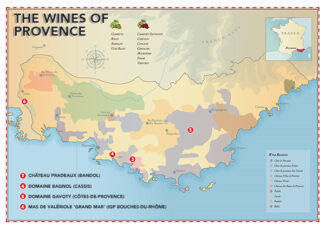
Château Pradeaux (Bandol)
Bandol is an AOP within the greater Provence appellation; it is relatively small, covering fewer than 4000 acres. Rosé represents about a third of Bandol’s wine production, and—like the reds—they are generally a blend of Mourvèdre, Grenache and Cinsault. Protected from the north winds by the Montagne Sainte-Victoire and the Massif de la Sainte-Baume to the north and the Chaîne de Saint-Cyr to the west, Bandol offers growing conditions suited to extra ripeness, greater fruit weight and enhanced structure, especially for the rosé. Attesting to the refreshing quality of these blush wines, Alexandre Dumas portrayed his Count of Monte Cristo as enjoying a glass of Bandol rosé ‘bien frais.’
Situated on the outskirts of the town of Saint Cyr-sur-Mer directly on the Mediterranean Ocean between Toulon and Marseilles, Château Pradeaux has been in the hands of the Portalis family since the French Revolution. In fact, Jean-Marie-Etienne Portalis helped draft the Napoleonic Code and assisted at the negotiation of the Concordat under Napoleon the First. Today, the domain is run by Cyrille Portalis, who continues to maintain the quality traditions of his forbears, assisted by his wife Magali, and their sons Etienne and Edouard. Although vineyards are planted almost exclusively to old-vine Mourvèdre, Château Pradeaux Bandol Rosé is composed of Cinsault as well.
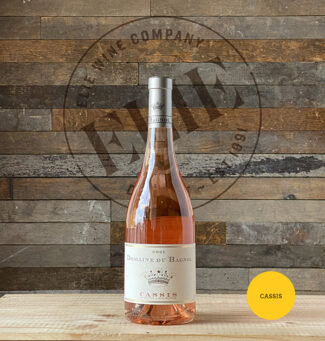 3 Château Pradeaux, 2021 Bandol Rosé ($37)
3 Château Pradeaux, 2021 Bandol Rosé ($37)
Among the richest rosés in Bandol, the vinification follows tradition: After a short maceration on the skins to extract light color, the juice is fermented at low temperatures to highlight freshness, fruit and bouquet. After being aged in stainless steel, the wine is bottled in the spring of the year following harvest. It is dry and full-bodied with mango, blood orange and white cherry flavors flanked with anise, honey cream and rose petal elements.
Domaine Bagnol (Cassis)
The entire vineyard area of Cassis is under five hundred acres, but most of the properties overlook the sea, which moderates the heat and creates an ideal climate for vine growing; the commune is known primarily for its herb-scented white wines, principally from Clairette and Marsanne (about 30% of Cassis production is rosé) and despite its name, it does not produce Crème de Cassis.
Sitting just beneath the imposing limestone outcropping of Cap Canaille, 700 feet from the shores of the Mediterranean, Domaine du Bagnol is the beneficiary of the cooling winds from the north and northwest and as well as the gentle sea breezes that waft ashore. Cassis native Jean-Louis Genovesi and his son Sébastien run the 18 acre estate.
 4 Domaine du Bagnol, 2021 Cassis Rosé ($37)
4 Domaine du Bagnol, 2021 Cassis Rosé ($37)
Grenache, Cinsault and a touch of Mourvèdre; the wine is perfumed and with red-currant and strawberry aromas and provides a crisp and refreshing wash of citrus and crushed stone and slate minerality.
Domaine Gavoty (Côtes-de-Provence)
The massive Côtes-de-Provence sprawls over 50,000 acres and incorporates a patchwork of terroirs, each with its own geological and climatic personality. The northwest portion is built from alternating sub-alpine hills and erosion-sculpted limestone ridges while to the east, and facing the sea, are the volcanic Maures and Tanneron mountains. The majority of Provençal vineyards are turned over to rosé production, which it has been making since 600 B.C. when the Ancient Greeks founded Marseille.
Roselyn Gavoty (the eighth generation of Gavoty to helm her family’s Roman-era farm; her ancestor Philémon acquired it in 1806) is on the cutting edge of viticulture. Situated along the Issole River in the northwestern corner of the Côtes-de-Provence, surrounded by oak and pine forests, the Gavoty family has worked the land without synthetic chemicals for decades, obtaining organic certification in recent years. The vineyard covers 150 acres in the commune of Cabasse (‘harvest field’ in the old Provençal language). Roselyn says, “Our vines are planted on clay-limestone soil, and produce a majority of rosé by the saignée method, involving involves bleeding off a portion of red must to create structure and depth.”
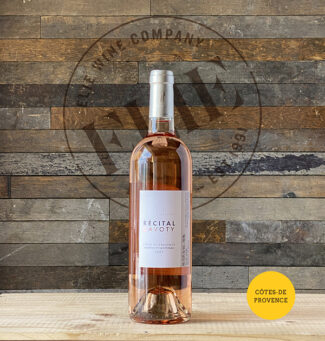 5 Domaine Gavoty ‘Récital’, 2021 Côtes-de-Provence Rosé ($23)
5 Domaine Gavoty ‘Récital’, 2021 Côtes-de-Provence Rosé ($23)
Roselyn’s grandfather Bernard Gavoty (1906-1980) was a renowned classical music critic for France’s newspaper ‘Le Figaro’, and the name of this cuvée pays homage to the importance of music in the family’s history. Comprising equal parts Grenache and Syrah, plus around 10% Carignan, and produced via direct pressing, ‘Récital’ delivers the ethereal color, lip-smacking salinity, and bright fruits one expects from the appellation, but with a sumptuousness of texture and a swelling, clinging finish that is all Gavoty. It offers spectacular value, as well as notable personality for its category.
Mas de Valériole (IGP Bouches-du-Rhône)
‘IGP’ (Indication Géographique Protégée) is a Europe-wide category that focuses on geographical origin rather than style and tradition, giving winemakers greater stylistic freedom than ‘AOP’ (Appellation d’Origine Portégée). As such, the boundaries of Bouches-du-Rhône are geographical, with the Durance river delimiting the north and the Rhône river making up the western border. The soils of the region tend to be poor, free draining and made up of anything from limestone-clay to gravel and sandstone; the lack of water forces vines to produce more concentrated grapes, leading to more concentrated and flavorful wine.
Mas de Valériole’s eighty-acre vineyards reflect this diversity in multiple soil types: sand, clay, limestone, and alluvial loam deposited by the Grand Rhône. The reliably steady mistral wind blowing in from the Mediterranean mitigates the heat and facilitates the domain’s chemical-free approach to farming while ensuring modest alcohol levels in the wines. The property was acquired by the Michel family in the late 1950s and is now run by Jean-Paul and Patrick Michel. Produced from a variety of cépages, including Cabernet Sauvignon and Merlot, plus crossings like Caladoc (Grenache and Malbec) and Marselan (Grenache and Cabernet Sauvignon) which are particularly well-suited to the Camargue’s climate, Mas de Valériole’s wines combine the breezy freshness of Provence with a sense of wildness and an underlying salinity that is representative of Bouches-du-Rhône.
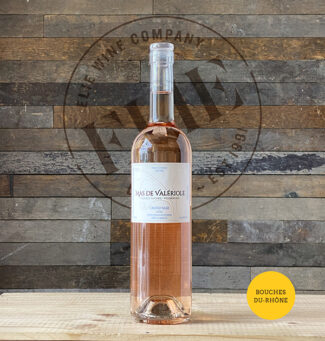 6 Mas de Valériole ‘Grand Mar’, 2021 IGP Bouches-du-Rhône – Terre de Camargue Rosé ($23)
6 Mas de Valériole ‘Grand Mar’, 2021 IGP Bouches-du-Rhône – Terre de Camargue Rosé ($23)
‘Grand Mar’ Rosé is 100% Caladoc, fermented with indigenous yeasts (unusual for rosé production) in stainless steel tanks to preserve freshness. The wine is enticing with vibrant notes of ruby-red grapefruit and white peach behind crackling acidity—a wine that never met a salmon dish it did not love.
Southern Rhône
From mighty Châteauneuf-du-Pape to easy-drinking Côtes-du-Rhone, the shared characteristic of wines from Southern Rhône are fruit-centered displays of lusciousness, spice and earth. Most of the massive red wines are suited to cool weather, but this is by no means the case for the rosé produced along the Mediterranean coast.
So dark in color are some of the Southern Rhône’s most celebrated rosés that they nearly defy the ‘blush’ concept. But the term itself isn’t fair to the category; in it very soul, rosé qualifies as neither red wine nor white wine. It may be (although rarely is; the practice is frowned upon) a blend of the two, but in nearly all cases, it is produced by crushing red-skinned, white-fleshed grapes and allowing a period of maceration lasting from a few hours to a couple days in which the juice is ‘dyed’ to a specific level; alternately, there is méthode saignée, which is essentially fermented free-run juice from red wine pressings.
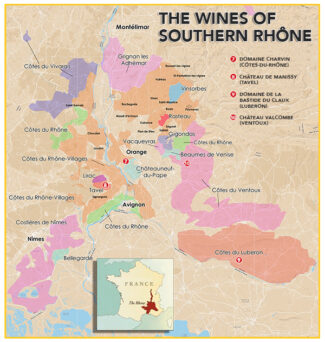
Domaine Charvin (Côtes-du-Rhône)
To wear the Côtes-du-Rhône label, the wine must come from a vast 140,000 acre area around the southern end of the Rhône Valley. Among the best value rosés in a category already saturated with bargains are the blush wines of this generic appellation; the offerings cover the spectrum of colors delineated in the Provençal color chart, pale pink to rich raspberry, with a palate that tends toward the full-bodied and exceptionally fruity. Novices have been known to ask if rosé is simply a blend of red and white grapes, and in the case of Côtes du Rhône rosé, up to 20% of the cuvée may be composed of white varieties.
Established in 1851 in Châteauneuf-du-Pape, Domaine Charvin is currently owned and operated by Laurent, the sixth-generation Charvin to run the domain but the first to commercially market a proprietary bottling. His meticulous attention to detail sees his harvest entirely hand-picked and sorted and bottled without filtration.
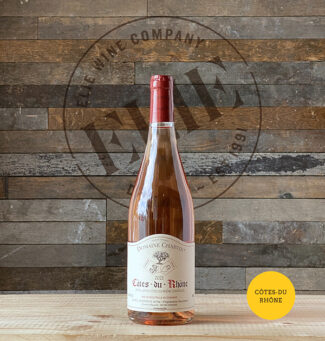 7 Domaine Charvin, 2021 Côtes-du-Rhône Rosé ($21)
7 Domaine Charvin, 2021 Côtes-du-Rhône Rosé ($21)
45% Grenache, 45% Cinsault, 10% Mourvèdre. Laurent Charvin’s 2018 Rosé is a forward, deliciously quaffable rosé that sports a light mango pink to go with upfront notes of candied cherries, melon, lavender and Provençal herbs.
Château de Manissy (Tavel)
Located on the bank of the Rhône River opposite to Châteauneuf-du-Pape, Tavel represents a triumvirate of terroirs: The lowest portion sits on sandy soils with very little organic matter and produces aromatic, low-alcohol wines; Lauses—a type of shallow soil covered with stone tiles mixed with red clay on a limestone bedrock—results in wines of great finesse and pronounced minerality; finally, Les Vestides, where the soil is blanketed with limestone rocks and produces robust, structured wines slightly higher in alcohol. To say ‘Tavel rosé’ is to repeat yourself since, by law, all wine from Tavel is rosé.
Château de Manissy was built in the middle of the 18th century by the Congregation of Missionary Fathers of the Holy Family who planted the first vines in 1916. Having developed a loyal following for their Tête de Cuvée, the priests turned over the managing of the estate to Florian Andre in 2004. Among the many improvements he brought to the site was a switch to minimal interference agriculture and in 2012, he certified organic and began producing some exceptional wines from the limestone and clay soils.
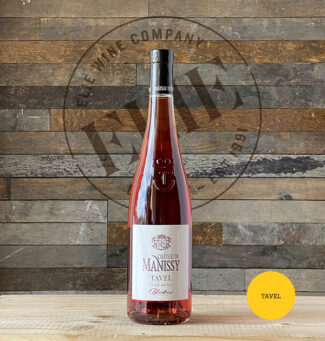 8 Château de Manissy ‘Cuvée des Lys’, 2021 Tavel ($19)
8 Château de Manissy ‘Cuvée des Lys’, 2021 Tavel ($19)
60% Grenache, 20% Syrah and 20% Clairette from vines that average 45 years old grown in clay, river rock and fine-grained sand. It opens with aromas of white flowers and spring strawberries, filling out in a silky blend of watermelon and pomegranate; it is rich in minerality and intriguingly peppery on the finish with notes of honeysuckle and lime.
Domaine de La Bastide du Claux (Luberon)
The list of grape varieties permitted in the relatively youthful Luberon appellation (created in 1988) is long, but Syrah and Grenache dominate plantings and must both be present in reds from here. Mourvedre is also considered a primary red grape. Rosé represents about half the region’s output, and are generally made from the permitted red grapes, although they may legally incorporate up to 20% of white varieties, primarily Grenache Blanc, Clairette, Bourboulenc, Ugni Blanc and Vermentino.
Domaine de La Bastide du Claux was born in 2002 when Sylvain Morey—whose family’s roots in Chassagne-Montrachet goes back 400 years—uprooted. In the hills of Luberon, he chose to transplant some of his Burgundian know-how to Provence’s up and coming appellation. In the heart of the Luberon Natural Park, Morey cultivates a fragmented vineyard spread over 42 acres. Finding Luberon’s rich combination of soils, climates and exposures suited to a number of different grapes, he planted 14 varieties, each location chosen with circumspection. “When I arrived, there were not many growers bottling their own wines,” he says. “The vast majority of the production in Luberon was made by local cooperatives, and many of them valued quantity over quality and began to replant vineyards so that they could produce the maximum amount of grapes possible and save money with machine harvesting. These trends made it possible for me to affordably purchase interesting, low-yielding old-vine parcels that were no longer valued.”
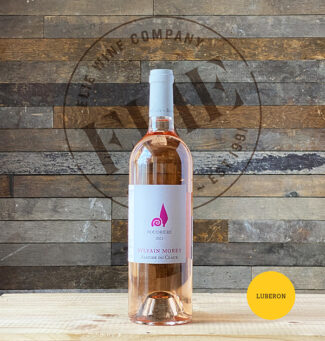 9 Domaine de La Bastide du Claux ‘Poudrière’, 2021 Luberon Rosé ($22)
9 Domaine de La Bastide du Claux ‘Poudrière’, 2021 Luberon Rosé ($22)
50% Grenache from 55-year-old vines, 30% Cinsault, and 20% and Syrah, from south facing vines around the villages of Peruis and Ansouis. The grapes were pressed directly, the majority without maceration, with a portion of Grenache and Cinsault spending six or so hours on their skins after the pressing. Everything is done in cement and the wine ferments naturally, resulting in a great mineral character, showing its soil influence clearly and offering subtle red fruits and vigorous acidity on the palate along with the salty tang that typifies Mediterranean rosé.
Château Valcombe (Ventoux)
Ventoux is a large wine region in the far southeast of the southern Rhône, 25 miles northeast of Avignon and bordering Provence. Covering 51 communes, the vines are planted on the western slopes of Mt. Ventoux, a sort of ‘stray’ Alp removed from the range and towering over the landscape for miles around. Ventoux terroir and varieties are typical for Rhône, although noteworthy are the region’s Muscat produced for table grapes, which has its own AOP—Muscat du Ventoux.
Originally owned by Paul Jeune of Domaine Monpertuis, he opted to sell to Luc and Cendrine Guénard who worked under Jeune’s tutelage during the transition period. They now are proudly independent vignerons with a compulsion to further improve this jewel; their first efforts can be seen and tasted in the 2009 vintage. Certified organic in 2013, the 70 acres of Valcombe are situated in the shadow of the mountain, reaching one thousand feet. Four red grape varieties (Syrah, Carignan, Grenache and Cinsault) balance four white grape varieties (Clairette, Grenache Blanc, Roussanne and Bourboulenc); many vines over sixty years old, although parcels of Carignan and Grenache were planted in 1936. Soils are essentially limestone covered with the area’s famous galets, although deep in the subsoil, an unusual blue-inflected clay helps define the unique characteristics of Valcombe wines.
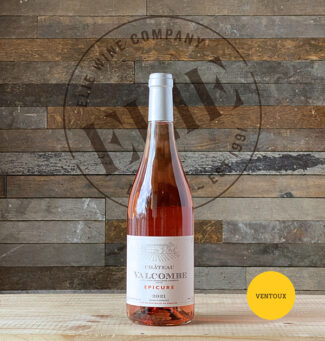 10 Château Valcombe ‘Epicure’, 2021 Ventoux Rosé ($20)
10 Château Valcombe ‘Epicure’, 2021 Ventoux Rosé ($20)
Vinified via the direct press method from a blend of 60% Grenache, 20% Cinsault, 10% Carignan and a touch of Clairette; all vines are of an average age of 40 years. It has a rich, focused rich texture with strawberry and peach in the foreground and an earthy and intriguing dose of eucalyptus behind.
Southwest Regions
The Atlantic’s Moderating Influence
Known as ‘France’s Hidden Corner’, Southwest wine region is tucked away between the Pyrénées to the south, Bordeaux to the north and the Atlantic Ocean on the west. There is no reason for the secret not be shared, though—there are twice as many acres under vine here than in Burgundy, making it the fifth largest growing region in the country. The appellation is generally subdivided into chunks, Bergerac/ Dordogne River, Garonne/Tarn and Lot. There are also some larger areas with less restrictive vineyard and winemaking regulations referred to as IGPs as defined above. The climate is maritime, with the Atlantic Ocean providing both warmth in winter and cooling influences in summer. Vineyards can be found on the alluvial terraces of the region’s many rivers, where gravelly soils and sandy loess soils provide a well-drained environment.
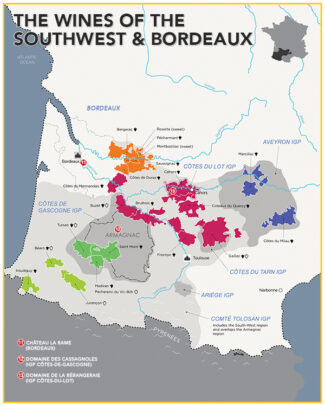
Château La Rame (Bordeaux)
The Bordeaux AOP is the most widespread generic appellation in the Gironde department and includes wines produced throughout the entire department on all types of soil legally entitled to produce wine. Winegrowers must cope with this wealth of possibilities by choosing the grape varieties best adapted to each terroir, which can then be totally given over to the AOP Bordeaux or shared with another appellation. The areas entitled to the Bordeaux appellation were defined in an official decree dated 14 November 1936. Red wine vineyards cover nearly 10,000 acres and account for over 50% of all wine produced in Bordeaux. In contrast, Bordeaux rosé is made from around 12,000 acres.
Among the oldest and most renowned properties in the Sainte Croix du Mont appellation, Château La Rame has been recognized throughout its history as one of the prime sites for producing outstanding wine, with gold medals at exhibitions in Bordeaux in 1895 and in Paris in 1900. The estate was purchased by Claude Armand, the father of the current owner, Yves Armand, at a time when the property had fallen out of favor through neglect.
The château’s fifty acres are set on a clay-limestone soil blessed with an exceptional substratum marked by a bed of fossilized oysters dating from the Tertiary era. The hillside vineyards overlooking the Garonne River (and facing full south as they slope down towards the river) are planted to white grapes, while in the sandier soils where the land slopes toward the river, Merlot and Cabernet Sauvignon are planted and are used to produce Bordeaux Rouge and Bordeaux Rosé.
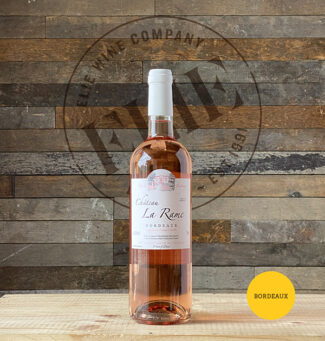 11 Château La Rame, 2021 Bordeaux Rosé ($24)
11 Château La Rame, 2021 Bordeaux Rosé ($24)
A typical Bordeaux blend, 80% Cabernet Sauvignon and 20% Merlot from a five acre parcel of younger vines on the flanks of a hill that descends towards the Garonne in the village of Sainte Croix du Mont. The wine is produced via the direct-press method and fermented in temperature-controlled vats for six months before it is bottled and released in the spring following the harvest. It shows ripe pear, lychee, lively citrus and a firm mineral backbone.
Domaine des Cassagnoles (IGP Côtes-de-Gascogne)
Côtes-de-Gascogne is the IGP title for wines that are produced in the area centered on the Gers administrative department; the catchment area covers all of Gers as well as smaller parts of Landes and Lot-et-Garonne. Across the appellation, the area is transitional, with the maritime effect of the Atlantic Ocean giving way to a more continental climate in the east of Gers. In the east, summers are warmer and drier, and the clay limestone soils retain water more effectively. Nearer the coast, loose, sandy soils with good drainage and high rainfall characterize the vineyards.
A practitioner of lutte raisonnée, Domaine des Cassagnoles’ 150 acres has been certified ‘Haute Valeur Environnementale’ since 2016. This is a voluntary qualification based on environmental themes: protection of biodiversity, a natural strategy to control plant diseases, organic management of fertilization and careful management of water resources. Cassagnoles is known for monovarietal wines using grapes indigenous to Gascony; the estate’s first 100% Colombard vintage was produced in the winery in 1980 and their 100% Gros Manseng has won high accolades.
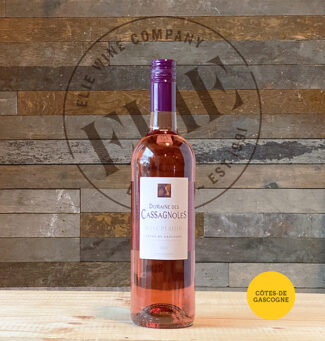 12 Domaine des Cassagnoles ‘Rosé Plaisir’, 2021 IGP Côtes-de-Gascogne Rosé ($11)
12 Domaine des Cassagnoles ‘Rosé Plaisir’, 2021 IGP Côtes-de-Gascogne Rosé ($11)
60% Cabernet Sauvignon and 40% Merlot. Skin maceration occurs under controlled temperature to obtain color, followed by pneumatic pressing, juice selection, cold stabilization and fermentation under controlled temperature about 65°F. The wine is nearly garnet dark with garnet color with a lush palate of brambly summer berries and fresh watermelon, bracing acidity and enough texture to stand up to bold food flavors.
Domaine de La Bérangeraie (IGP Côtes-du-Lot)
Côtes du Lot, southeast of Bordeaux, is best known as the home of Cahors, where the inky and long-lived wines are built of Malbec. Reds make up the majority of production, accounting for around 60% of the output, while rosés make up around 13%. Lot is found on the very southern border of the Massif Central, the low mountain range that covers a large tract of southeast France. The topography is dominated by the Quercy Plateau, an undulating limestone plateau that is cut through by the Lot and Dordogne rivers. Most Lot vineyards are found in the valleys of these rivers, where the alluvial terroir is well-suited to viticulture.
André Berenger came to Cahors from Provence fifty years ago along with his wife Sylvie, who is originally from Champagne, and planted a vineyard near Grezels on the red clay/ iron stone soil known as Grèzes. Their two children, Maurin and Juline joined them in the family business, and today, along with their spouses, do all sustainable farming of the vineyards (Terra Vitis certified). All harvesting is done by hand, a disappearing practice in machine-friendly Cahors where harvesting is now done almost exclusively by machine. Bérangeraie wines are proof that hand-made artisanal wines of character and accessibility, are still being made in Cahors.
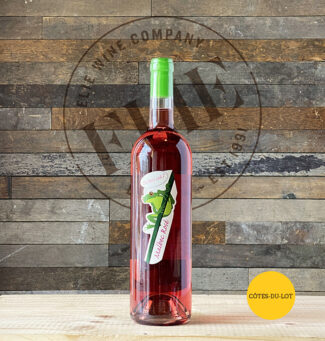 13 Domaine de La Bérangeraie ‘Tu Bois Coâ?’, 2021 IGP Côtes-du-Lot Malbec Rosé ($12)
13 Domaine de La Bérangeraie ‘Tu Bois Coâ?’, 2021 IGP Côtes-du-Lot Malbec Rosé ($12)
The frog on the label asks, “Tu Bois Coâ?”—an in-joke, perhaps—coâ is the French equivalent of a frog’s ‘ribbet.’ The wine is serious, though, offering a juicy nose of wild strawberry, gooseberry, watermelon and spice notes with crisp acidity and a long, easy-going palate.
- - -
Posted on 2022.08.05 in Luberon, Ventoux, Côtes-de-Gascone, Côtes-du-Lot, Tavel, Côtes-du-Rhône, cassis, Corbières, Bandol, France, Bordeaux, Wine-Aid Packages, Languedoc-Roussillon, Provence, Southern Rhone, South West
Featured Wines
- Notebook: A’Boudt Town
- Saturday Sips Wines
- Saturday Sips Review Club
- The Champagne Society
- Wine-Aid Packages
Wine Regions
Grape Varieties
Aglianico, Albarino, Albarín Blanco, Albarín Tinto, Albillo, Aleatico, Arbanne, Aubun, Barbarossa, barbera, Beaune, Biancu Gentile, bourboulenc, Cabernet Franc, Cabernet Sauvignon, Caino, Caladoc, Calvi, Carcajolu-Neru, Carignan, Chablis, Chardonnay, Chasselas, Clairette, Corvina, Cot, Counoise, Erbamat, Ferrol, Fiano, Frappato, Friulano, Fromenteau, Fumin, Garnacha, Gewurztraminer, Godello, Graciano, Grenache, Grolleau, Groppello, Juan Garcia, Lambrusco, Loureira, Macabeo, Macabou, Malvasia, Malvasia Nera, Marsanne, Marselan, Marzemino, Melon de Bourgogne, Merlot, Mondeuse, Montanaccia, Montepulciano, Morescola, Morescono, Moscatell, Muscadelle, Muscat, Natural, Nero d'Avola, Parellada, Patrimonio, Petit Meslier, Petit Verdot, Pineau d'Aunis, Pinot Auxerrois, Pinot Blanc, Pinot Gris, Pinot Meunier, Pinot Noir, Poulsard, Prieto Picudo, Rondinella, Rousanne, Roussanne, Sangiovese, Sauvignon Blanc, Savignin, Semillon, Souson, Sparkling, Sumoll, Sylvaner, Syrah, Tannat, Tempranillo, Trebbiano, Trebbiano Valtenesi, Treixadura, Trousseau, Ugni Blanc, vaccarèse, Verdicchio, Vermentino, Viognier, Viura, Xarel-loWines & Events by Date
- April 2024
- March 2024
- February 2024
- January 2024
- December 2023
- November 2023
- October 2023
- September 2023
- August 2023
- July 2023
- June 2023
- May 2023
- April 2023
- March 2023
- February 2023
- January 2023
- December 2022
- November 2022
- October 2022
- September 2022
- August 2022
- July 2022
- June 2022
- May 2022
- April 2022
- March 2022
- February 2022
- January 2022
- December 2021
- November 2021
- October 2021
- September 2021
- August 2021
- July 2021
- June 2021
- May 2021
- April 2021
- March 2021
- February 2021
- January 2021
- December 2020
- November 2020
- October 2020
- September 2020
- August 2020
- July 2020
- June 2020
- May 2020
- April 2020
- March 2020
- February 2020
- January 2020
- December 2019
- November 2019
- October 2019
- September 2019
- August 2019
- July 2019
- June 2019
- May 2019
- April 2019
- March 2019
- February 2019
- January 2019
- December 2018
- November 2018
- October 2018
- September 2018
- August 2018
- July 2018
- June 2018
- May 2018
- April 2018
- March 2018
- February 2018
- January 2018
- December 2017
- November 2017
- October 2017
- September 2017
- August 2017
- July 2017
- June 2017
- May 2017
- April 2017
- March 2017
- February 2017
- January 2017
- December 2016
- November 2016
- October 2016
- September 2016
- August 2016
- July 2016
- June 2016
- May 2016
- April 2016
- March 2016
- February 2016
- January 2016
- December 2015
- November 2015
- October 2015
- September 2015
- August 2015
- July 2015
- June 2015
- May 2015
- April 2015
- March 2015
- February 2015
- January 2015
- December 2014
- November 2014
- October 2014
- September 2014
- August 2014
- July 2014
- June 2014
- April 2014
- March 2014
- February 2014
- January 2014
- December 2013
- November 2013
- October 2013
- September 2013
- August 2013
- July 2013
- June 2013
- May 2013
- April 2013
- March 2013
- February 2013
- January 2013
- December 2012
- November 2012
- October 2012
- February 2004
Search



